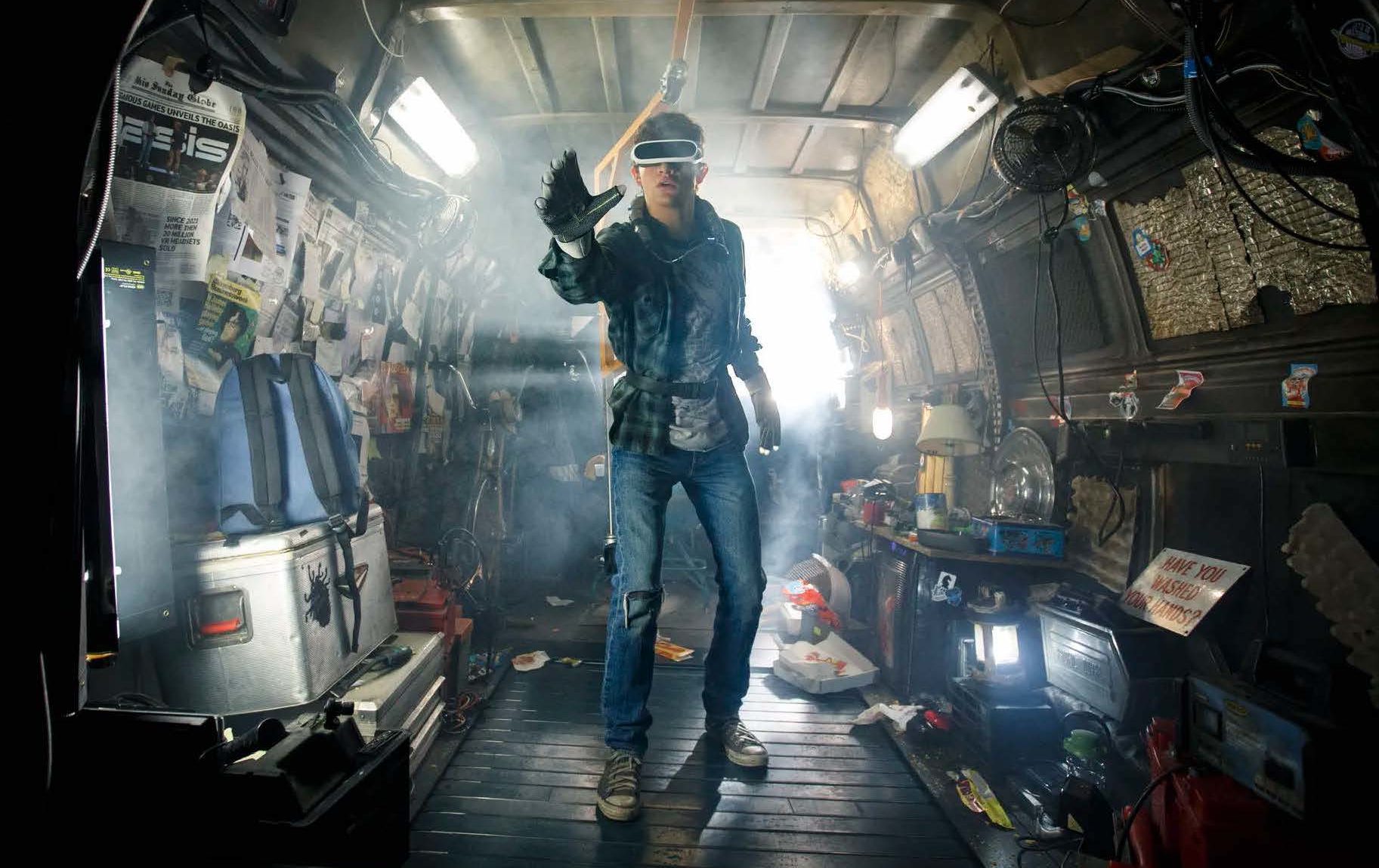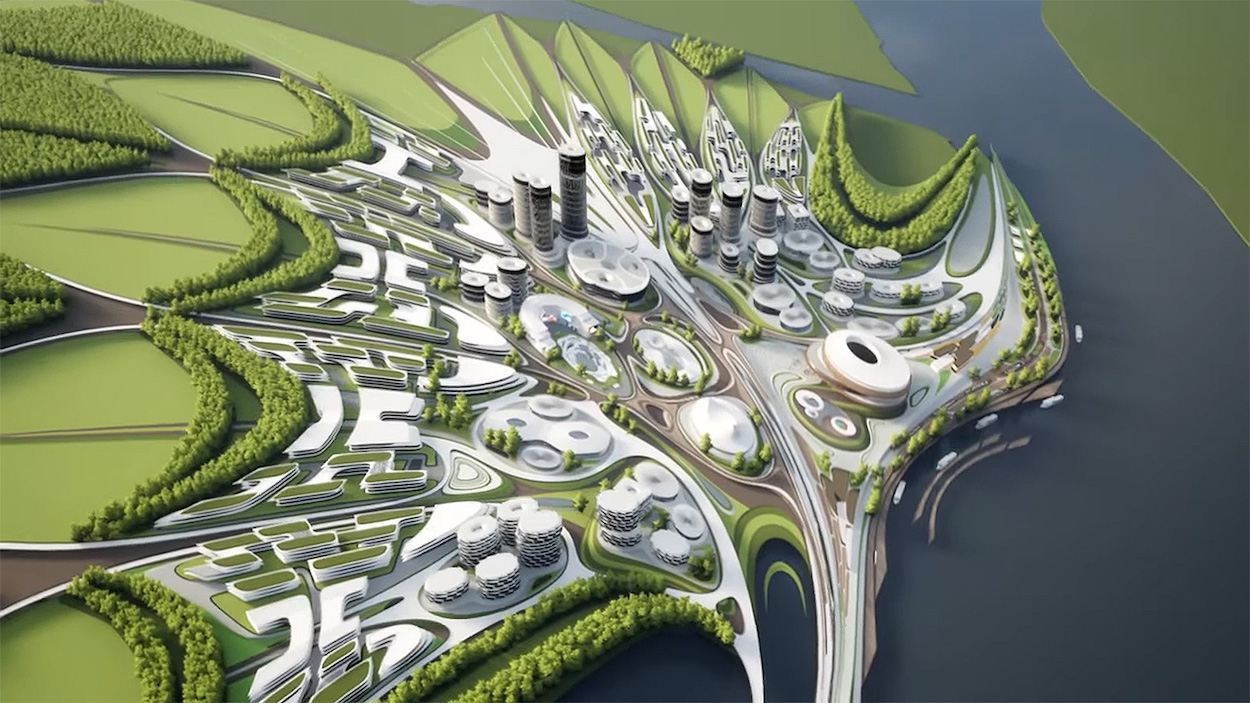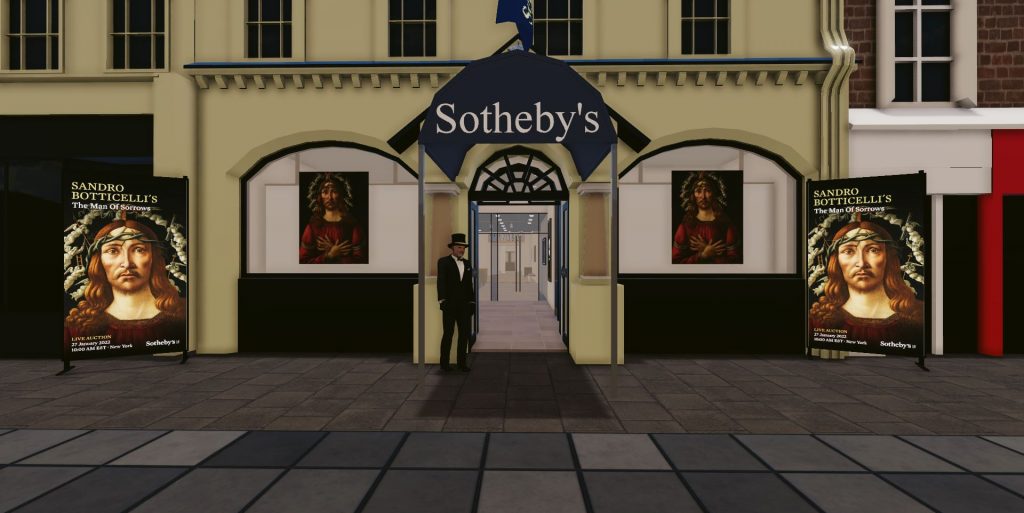Architects: Want to have your project featured? Showcase your work through Architizer and sign up for our inspirational newsletters.
“But listen — movie that gives one sight and sound. Suppose now I add taste, smell, even touch, if your interest is taken by the story. Suppose I make it so that you are in the story, you speak to the shadows, and the shadows reply, and instead of being on a screen, the story is all about you, and you are in it. Would that be to make real a dream?”
The 1935 short story Pygmalion’s Spectacles by Stanley G. Weinbaum foreshadowed the invention of virtual reality in a tale inspired by greek mythology. Alongside time travel, space exploration and harnessing alternative energy sources, virtual reality is an ideal that has gripped the fantastical minds of my fellow nerds for the better part of a century.
More recently, Ernest Cline released his best-selling novel Ready Player One (2011). It is a story of virtual reality, interwoven with the global health and climate issues that dominate this era and set against the background of the modern-day consumerist-driven society we are familiar with. Set in a dystopian landscape of 2045, protagonist Wade Watts is a hermit, confined to a lawless slum city and increasingly living through a state-of-the-art virtual reality experience; nothing about his digital life and reality is reflective of one another. While Cline’s story is intended as a sci-fi adventure novel, it turned out to be quite prescient. Three-and-a-half decades later, his imagined future has morphed into our present-day reality. Like Wade’s, our world outside is becoming increasingly unpredictable, so the drive for sanctuary in a virtual utopia is accelerating at unprecedented speed. VR is here, but do we really want to inhabit a world run by a corporation like Meta?

Still from the 2018 movie adaption of Ready Player One.
Just shy of 20 years from the inception of Facebook, it seems fair to say each of us has our opinion on Meta (formerly Facebook) and most likely an even stronger opinion on the platform’s polemic founder Mark Zuckerberg. Over the years, the dominating social network has been shrouded in secrecy, lies, controversy and general speculation as repeated whistleblowers emerge. The social media giant has reportedly allowed its platform to be weaponized as a tool to undermine democracy, diminish human rights, violate privacy, sabotage public health and hinder innovation. Now, despite the deep-seated unease many feel about the unprecedented power Meta holds over our digital landscape, we are plummeting head first at 319 terabits per second into the next chapter of Meta’s evolution. We watch in awe and horror as the gargantuan social media network shifts from the captivity of the screens on our devices into our physical, material, “real” world. What will this mean for architects and for architecture?
The majority of assessments suggest that the Metaverse has enormous potential across many industries, giving us a greater ability to embolden our online connections by opening the world more than ever before. The virtual reality space seeks to to facilitate face-to-face interaction without physically leaving wherever we are. It should be a platform for freedom and collaboration without boundaries; however, we must not forget that the Metaverse as it currently stands is a product designed, owned and operated by a few pretty nefarious companies with Zuckerberg’s Meta at the helm.

Controversial Meta founder Mark Zuckerberg revealing his avatar within the Metaverse
Tim Sweeney, the founder of Epic Games, said when discussing the Metaverse, “If one central company gains control of this, they will become more powerful than any Government and will be a God on Earth” that simply cannot happen, and there are few who would support it. The danger lies in big companies dominating the Metaverse and the money within it.
At this moment, the Metaverse remains a relatively niche platform enjoyed and explored by virtual reality hobbyists and digital designers. Initial reports suggest that the multi-billion dollar platform is clunky, and the space feels far from the attached label of Virtual Reality. As we saw in Zuckerberg’s now infamous presentation of his vision for the platform, avatars are cartoonish, and landscapes game-like and simplistic. Compared to the impressive CGI we are accustomed to in gaming and cinema — or even the life-like images created by ArchViz studios on the regular — it appears as a basic world designed by tech moguls who are excited by minimalism. People with little to no imagination regarding the design of physical spaces. Right now, the Metaverse is nowhere near what it promises to be. While the Metaverse fails to deliver, the commonality of these reviews is simple, the Metaverse is ugly. The solution? The saviors? Bring forth the architects.
Architects and designers have been harnessing the power of virtual reality for decades. 3D visualization has allowed us to shortcut our design processes, and renders have become standard practice, with visualizations becoming practically inseparable from photographic reality. We use images, walkthroughs and models for interiors, buildings, and masterplans — entire cities are realized as “meta” spaces in projects worldwide. Architects are already using many game designers’ tools to create realistic-looking virtual environments for their clients, only, we call them 3D models.

Rendering of Liberland by Zaha Hadid Architects
Job boards are awash with adverts for visualizers as companies scramble to make their mark on the Metaverse, carving out ground that, for some, has the potential to become a goldmine. NFTs are making millions, and plots of land within the Metaverse’s main “world,” Decentraland, costing thousands of dollars. Like advertisements in a newspaper these VR spots have the potential to be a showroom and sales floor for digital assets. Many architecture firms are already exploring the Metaverse, but like the platform itself, the reviews so far are less than flattering. Much of these architectural developments are seemingly projects that cannot be realized in reality for financial or technological reasons. Take for example Zaha Hadid Architects’ contribution, which Ryan Scavnicky of Architect’s Newspaper described as “pure cringe.” (He also later lambasted BIG’s virtual headquarters for Vice Media, saying that it “disappoints on every level.”) Is the Metaverse simply a place to show off our dreams, merely virtual and far removed from reality?
With no physical constraints, there is an argument to be made that architecture in the Metaverse is not architecture at all but a whole new field of design where the practical skill set of architects is likely to be devalued. The Metaverse is a space where the understanding of engineering and physics, which are typically so vital to good architecture, are lost to the imagination of aesthetics without boundaries. While the world outside is so plagued with problems, is it likely that we will see architects shift from fixing the issues of reality to spending time and resource developing a glorified online shopping mall and playground for the elite? Can we even call it architecture if there is no problem solving, only creation?
Personally, I can’t see it. I cannot imagine a world where the greatest minds of the next generation of architecture would choose to set their sights on an imaginary landscape without challenge. It seems to me the Metaverse is just a bit of fun, a new toy to play with where we can show off our potential and to dream big — an help companies turn even greater profits at the same time. It is a place for imagination and what if’s, but when a new toy is owned by the playground bullies, how long would you really want to play for? Is it worth it to give Meta, Zuckerberg and all his friends even more access to your data when it’s apparent they cannot be trusted with it?

Sotheby’s in Decentraland
I have spent large portions of my life in virtual worlds. As a millennial, I’ve played video games since I was a child, I’ve lived comfortably and successfully online since adolescence, I do not fear technological advancement and am captivated by the potential of technology of the future. However, I have seen the greed and corruption of tech giants like Meta and the wave of distrust that follows them. That distrust will be the downfall of the Metaverse. I believe this generation will demand for too much privacy and transparency from the corporations building the Metaverse that they will never be capable of delivering.
As with many people my age, my relationship with Meta was broken years ago, and I do not intend on rekindling it for the sake of the Metaverse. While I do believe and indeed in part hope that the Metaverse as it is now is doomed, I see clearly the potential of virtual reality, and therefore I will wait patiently for an alternative platform, one based on trust and transparency. There is great opportunity for virtual reality platforms outside the hands of big tech and their need for extreme financial gain; in that reality, we would really see what the architects of the digital landscape are capable of and what good can come of this type of technology. Maybe that day will never come, maybe we are too far gone to go back — if it does arrive, I will be more than happy to dive in head first and see what wonders can be achieved.
Architects: Want to have your project featured? Showcase your work through Architizer and sign up for our inspirational newsletters.








